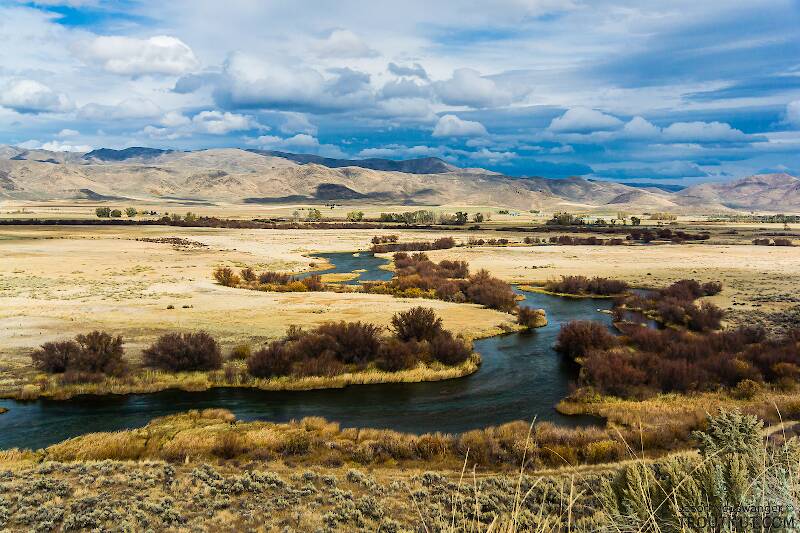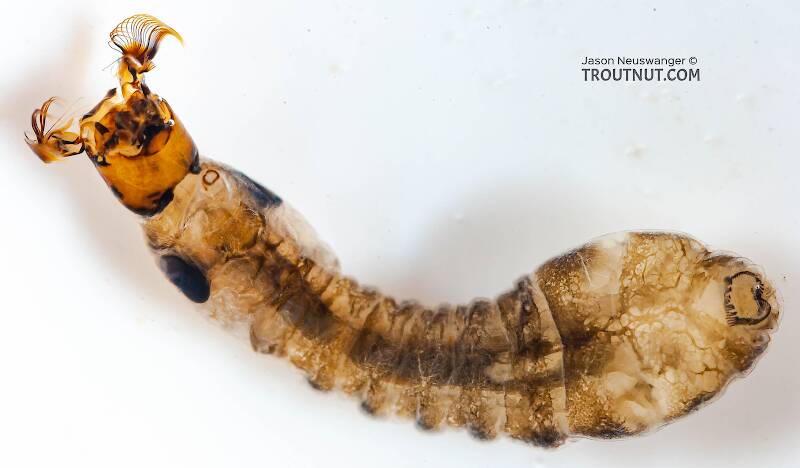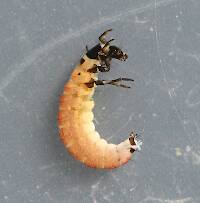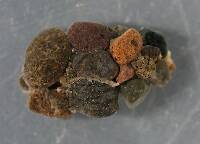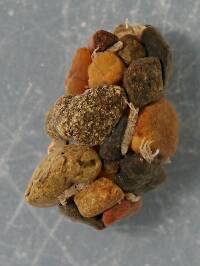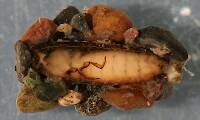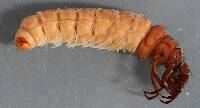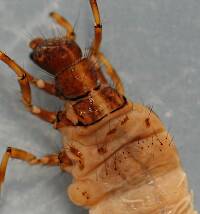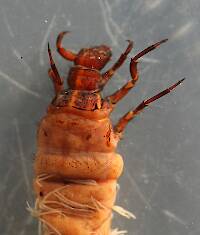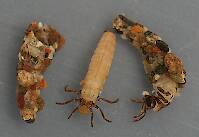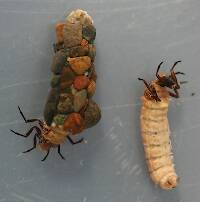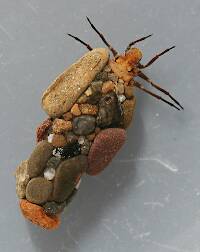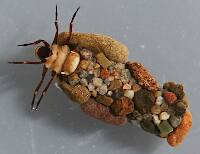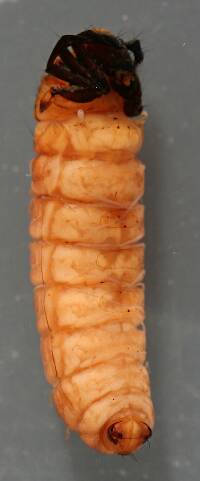
Salmonflies
Pteronarcys californica
The giant Salmonflies of the Western mountains are legendary for their proclivity to elicit consistent dry-fly action and ferocious strikes.
Featured on the forum

Nymphs of this species were fairly common in late-winter kick net samples from the upper Yakima River. Although I could not find a key to species of Zapada nymphs, a revision of the Nemouridae family by Baumann (1975) includes the following helpful sentence: "2 cervical gills on each side of midline, 1 arising inside and 1 outside of lateral cervical sclerites, usually single and elongate, sometimes constricted but with 3 or 4 branches arising beyond gill base in Zapada cinctipes." This specimen clearly has the branches and is within the range of that species.

Troutnut is a project started in 2003 by salmonid ecologist Jason "Troutnut" Neuswanger to help anglers and
fly tyers unabashedly embrace the entomological side of the sport. Learn more about Troutnut or
support the project for an enhanced experience here.
Phineartz
Posts: 1
Posts: 1
Phineartz on Jan 16, 2019January 16th, 2019, 4:00 am EST
These are always abundant in my stream samples and have even found them wriggling around on my pack after a dunking.. I have always thought they were midge larvae as that is the common assumption I've gathered from local anglers, but due to their size and shape I started to question this. Scouring online resources and comparing photos led me here, where I see they are a different critter altogether. I have never heard of anglers discussing the use of Simuliidae patterns but I'm looking forward to experimenting with them in the future. Thank you for the photos and the resource! -Mike in KY
Wbranch on Jan 16, 2019January 16th, 2019, 2:11 pm EST
Oh Simuliidae how do I hate thee? Hmm, let me count the ways. I loathe these incessantly pestering, harassing, and biting scourges of the insect world!! At my cabin I am plagued by these miniscule beasts from late April to early October. Over the years it seems to have gotten worse. Although maybe because 2018 was such a wet year there were just more of them. I believe they are multi generational over the course of the six months I use the cabin. Even the slightest amount outdoor exertion will bring out the attacking hordes. I have to wear a head net to cut the lawn or do any work. If I want to sit by the river to look for rising fish liberal applications of DEET are mandatory. Yet once I wade into the river and get 15' away from the bank they are no longer a problem.
Catskill fly fisher for fifty-five years.
Jmd123 on Jan 17, 2019January 17th, 2019, 2:16 am EST
The Pine River is loaded with them. Last time I took a class out there to sample we discovered that practically every stone bigger than 1" in diameter had a dozen of them clinging to it. Not to mention absolutely hordes of other inverts that came squirming out of the debris, caddisflies, mayflies, stoneflies, beetle larvae, midges, crustaceans, worms, sculpins, etc...TROUT FOOD!
But yes, they do SUCK when it comes to making me itch...Skin So Soft* keeps them at bay though, and you get nice soft skin as a bonus. ;oD
Jonathon
*I have used a knock-off made by CVS that worked just as well.
But yes, they do SUCK when it comes to making me itch...Skin So Soft* keeps them at bay though, and you get nice soft skin as a bonus. ;oD
Jonathon
*I have used a knock-off made by CVS that worked just as well.
No matter how big the one you just caught is, there's always a bigger one out there somewhere...
Quick Reply
Related Discussions
Topic
Replies
Last Reply
0
Aug 12, 2012
by Hdhungryman
by Hdhungryman
9
Dec 1, 2014
by Stewart711
by Stewart711

